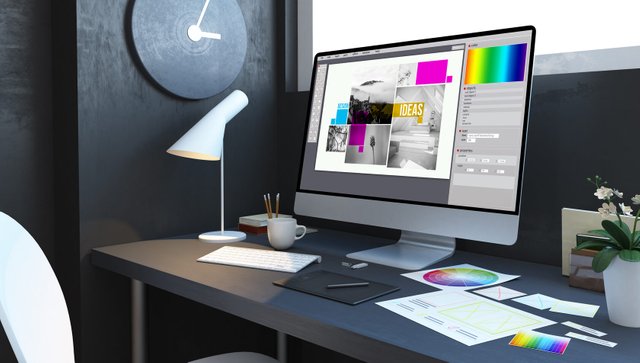From Print to Screen: What Web Designers Can Learn from Magazine Layouts
The glossy pages of a magazine hold secrets. They reveal lessons that can guide web design. Many designers overlook this treasure chest, yet the bridge between print and digital is strong.
Magazines have always mastered attention. They lure them with striking photography and hold focus with balanced typography. Each page feels deliberate. Each spread feels like an invitation. Your web design in Sydney can steal these tricks and reimagine them for digital screens.
Let’s see how!
The Power of the First Impression
Think of a magazine cover. It must scream from a crowded shelf. A single glance decides its fate. Web design faces the same challenge today. A homepage must grip within seconds. If not, the visitor drifts away.
That is why magazines use dramatic headlines.
- They splash bold fonts across the cover.
- They tease stories with bite-sized phrases.
- They pair them with a single unforgettable image.
Visual Hierarchy as a Compass
Turn the page of a magazine. Notice how your eyes move. The layout guides you. It nudges you left, right, up, and down. It makes sure you see the photograph before the text. Then, it draws you into the story.This is a visual hierarchy. It is a design that acts like a compass. Websites need this compass, too, so the user must never feel lost.
- Headlines must pop.
- Subheadings must guide.
- Body text must breathe.
- Buttons must stand like landmarks.
The Art of White Space
A magazine knows the value of emptiness. White space feels like a sigh. It gives relief and makes the message sharper. Crowded pages, on the other hand, exhaust the reader.Websites often forget this and cram content into every pixel. Designers often fear silence. Yet silence gives a generous margin that adds elegance. A clean background adds trust. A balanced layout adds confidence.
Photography That Speaks
Magazines thrive on photography. A photograph can say more than a thousand words. It can reveal mood, set tone, and tell a story without letters.
Your web design in Sydney must harness this. But stock photos rarely achieve it. Authentic photography wins it with ease. Images must feel alive. They must capture humanity and strike emotion. They must blend with text rather than fight it.
A hero image at the top of a site should feel cinematic. A product photo should feel tactile. A portrait should feel intimate.
The Art of Typography
Magazines treat typography like fashion. They express identity. Your web design in Sydney should do the same. Fonts should match brand personality. They should carry rhythm and guide emotion.
- Use contrast between the headline and body.
- Use weight and size to signal importance.
- Keep text legible.
- Keep line spacing open.
Storytelling Through Layout
Flip through a feature article in a magazine. It feels like a journey. The opening page sets the stage, and the next pages build momentum. Pull quotes break monotony. Sidebars add intrigue. Photographs stretch across spreads.Every element works like a chapter in a book.
Web design thrives when it borrows this. A landing page should feel like a narrative. Start with intrigue. Build with detail. Break the rhythm with visuals. End with a strong call to action. Guide the visitor through a story rather than dump information.
Grids as Silent Architects
Magazines live by grids. The invisible lines shape balance and create rhythm. They ensure that chaos never wins. Columns, gutters, and margins form a hidden skeleton.
Web designers in Sydney must embrace this because a grid creates harmony and keeps elements aligned. It provides consistency. Whether two columns or twelve, grids offer freedom within order. Responsive design needs grids more than ever.
Colour Palettes With Personality
Magazines rarely use colour randomly. A cover might blaze with neon pink. A feature might wash with muted tones. Colour always serves a purpose. It conveys mood and reinforces identity.
Web design must adopt this discipline. Colours should not shout over one another. They must converse. A brand palette should dominate. Accent colours should highlight, background tones should soothe, and contrast must ensure readability.
Callouts and Sidebars as Digital Tools
In a magazine, a sidebar saves attention. It offers a quick fact. A pull quote sparkles with drama. A callout box interrupts in style. These tools break monotony and rescue the reader from fatigue.
Web designers can translate this into digital features. Highlighted quotes can grab eyes. Fact boxes can simplify details. Cards can organise content. Accordions can hold extra layers. So, your design must create pauses that refresh.
Inspiration from Classic Icons
Think of National Geographic. Its layouts combine vast photographs with clean text.
Think of Vogue. Its spreads feel luxurious and theatrical.
Think of TIME. Its covers focus on iconic portraits.
These brands built identity through design.
Your web designer in Sydney can study them like textbooks. Note how they handle balance, how they use restraint, and how they experiment yet remain consistent. These lessons can fuel modern websites.
Conclusion
Magazines taught us how to hold attention. They mastered storytelling through layout. If your web design in Sydney can replicate it, success is yours. The screen is the new page. The scroll is the new flip. The button is the new callout. The homepage is the new cover.
You can get help from reliable experts like Make My Website. Their team will help you cross the bridge from print to digital.
